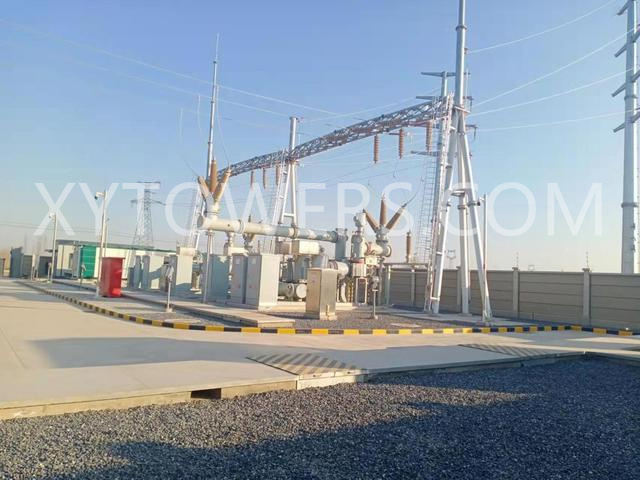
A gantry is a structure that supports equipment or machinery, often used in a variety of industrial applications, including substations. It usually consists of a frame that spans a space and is used to move materials or install electrical components. In substations, gantries play a vital role in supporting overhead lines and electrical equipment, ensuring the safety and efficiency of power distribution.
Substations are an essential part of the power grid and are where electricity is converted from high voltage to low voltage for distribution to homes and businesses. Substations are complex structures and often employ a variety of materials and designs to meet specific operational requirements. One of the main materials used in substation construction is steel, which provides the necessary strength and durability.
Steel structures are often used in substation construction because of their toughness and ability to withstand harsh environmental conditions. Steel structure factories specialize in the production of various steel components, including steel tubes and steel angles, which are essential for building a strong substation frame. Steel tubes are often used for structural support, while steel angles provide additional stability and reinforcement to the overall design.
The substation structure itself is designed to house various electrical components, such as transformers, circuit breakers, and switchgear. These components are usually mounted on a gantry for easy access and maintenance. The use of a gantry in a substation not only improves operational efficiency, but also ensures that equipment is safely positioned, minimizing the risk of accidents.
In addition to their functional role, gantries contribute to the overall design and aesthetics of a substation. The combination of steel structures and gantries creates a visually appealing and well-organized environment, which is essential for both operational purposes and public perception. Careful planning and implementation of these structures is essential to ensure that the substation operates efficiently and maintains safety standards.
The design of a substation gantry must take into account several factors, including load capacity, height, and the specific equipment it will support. Engineers and designers worked closely to create a gantry that could withstand the weight of heavy electrical components while providing adequate space for maintenance activities. This careful consideration ensured that the gantry structure was not only practical, but also safe for workers who might need to access the equipment.
Additionally, the use of steel angles in the construction of the gantry increases its strength and stability. These angles are often used to create a sturdy frame that can withstand the forces exerted by wind, seismic activity, and the weight of equipment. The combination of steel tubes and angles in the gantry design creates a sturdy structure that is essential for the safe operation of the substation.
In summary, gantries are an integral component of substations, providing the necessary support for electrical equipment and ensuring safe access for maintenance. The use of structural steel, including steel tubes and angles, improves the durability and stability of these gantries, making them a critical aspect of substation design. As the demand for reliable power continues to grow, the importance of well-designed gantries and substation structures will only increase, highlighting the need for innovation and excellence in the steel structure plant industry.
Post time: Dec-19-2024





